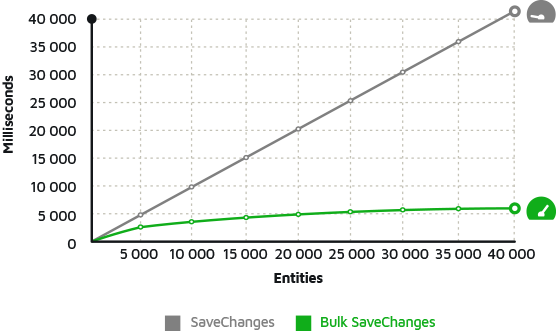Creating Generic Queries with LINQ in Entity Framework 4
In the concept of object orientation, we always have in mind to create codes that can be reused within the application or even in different applications. In this context, I have been asked how it is possible to use LINQ, which is totally object-oriented and strongly typed, and still create reusable codes.
Taking advantage of this situation, I will show how it is possible to create a query method using LINQ, which is used to query practically any entity (table) of your model. We will create a completely generic query, and one of the possible places that you can use this type of method, it is in a query routine that you call throughout your system, for example.
For our example, let's create a very simple console project, remembering that we will use Visual Studio 2010 with Entity Framework 4:

Now let's add the Entity Framework model, for this example we will use the Northwind database, if you don't have it, download it here. To add the model, right-click on your project and go to Add / New Item, or CTRL + SHIFT + A and select Data and then ADO.Net Entity Data Model. Choose
Generate from a database and create a connection to your Northwind database. Select some tables, for example: Categories, Products, Customers:

After creating the EDMX file, let's go to the Query method:
static ObjectQuery<DbDataRecord> Query(string query, ObjectContext ctx) { return new ObjectQuery<DbDataRecord>(query, ctx); }
Note: add the following namespaces:
using System.Data.Objects; using System.Data.Common;
It looks like it got complicated, but it is very simple. We are returning a generic object of type DbDataRecord, and within the method, we are returning a new ObjectQuery, which allows us to create queries dynamically. Let's see an example of a method call:
static void Main(string[] args) { NorthwindEntities ctx = new NorthwindEntities(); var datas = Query("SELECT c.ProductName, c.UnitPrice FROM Products AS c", ctx); foreach (DbDataRecord data in datas) { Console.WriteLine(data["ProductName"] + " - " + data["UnitPrice"]); } }
First, we create the context for the Northwind database, and then we call the Query method passing in our query and the context. See that the query looks a lot like an SQL query, and in this case, we are bringing the ProductName and UnitPrice from the Products table.
Then we run a foreach() to show the data, using DbDataRecord to access the query fields. Let's look at another example, now also bringing data from the Categories table:
var datas = Query("SELECT c.ProductName, c.UnitPrice, c.Categories.CategoryName FROM Products AS c" , ctx); foreach (DbDataRecord data in datas) { Console.WriteLine(data["ProductName"] + " - " + data["UnitPrice"]+" - "+data["CategoryName"]); }
And to end an example with a conditional query:
var datas = Query("SELECT c.ProductName, c.UnitPrice, c.Categories.CategoryName FROM Products AS c WHERE c.UnitPrice < 10" , ctx); foreach (DbDataRecord data in datas) { Console.WriteLine(data["ProductName"] + " - " + data["UnitPrice"]+" - "+data["CategoryName"]); }
I believe that this simple example can help in the development of your application and also show the number of existing features in Entity Framework 4.
